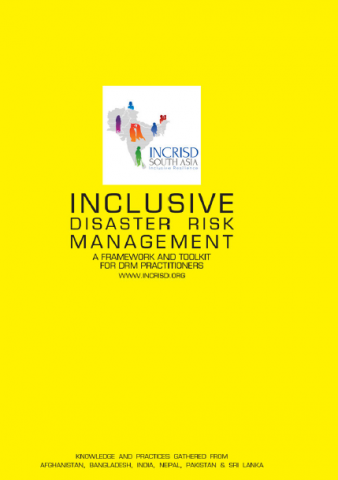Inclusive Disaster Risk Management: A framework and toolkit for DRM practitioners


The Inclusive DRM Framework and Toolkit is the result of two years’ work as part of the regional project Inclusive Resilience for Sustainable Disaster Risk Management by the INCRISD South Asia Consortium.
The project was carried out in Afghanistan, Bangladesh, India, Nepal, Pakistan and Sri Lanka, with the overall objective of building safer and more resilient communities. To this end, it proposes an inclusive community-based disaster risk management framework for the South Asia region, and promotes it through longer term strategies. These longer term efforts, which go beyond the DIPECHO project cycle, include applying it at local levels and improving the framework based on the pilots. Over this period, the draft framework was shaped and revised over and over again.
The objective was to capture the essentials of ‘inclusion’ in a way that could be useful for DRM practitioners, both in order to improve the quality of their own work to reduce disasters and disaster losses and also to advocate for inclusion in collaboration with others.
– INCRISD South Asia 2014
